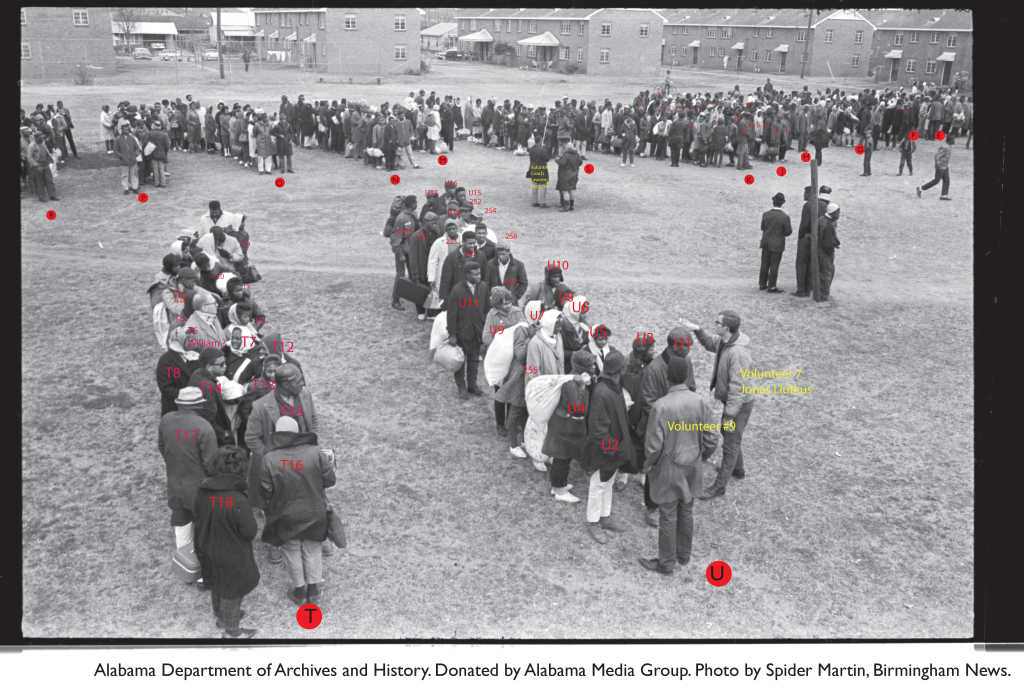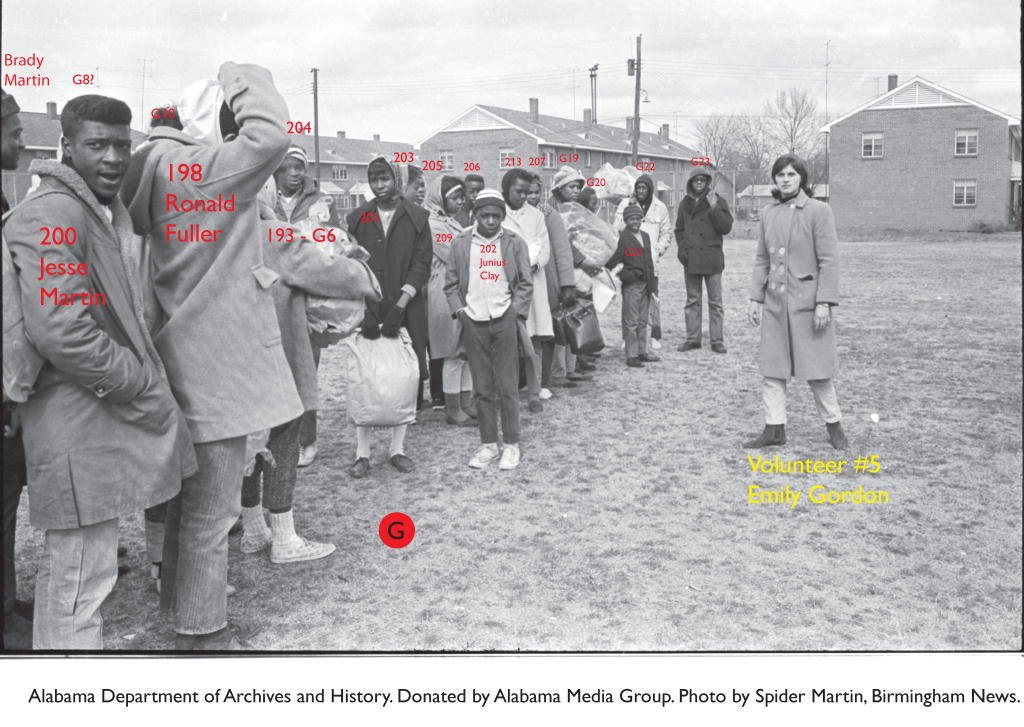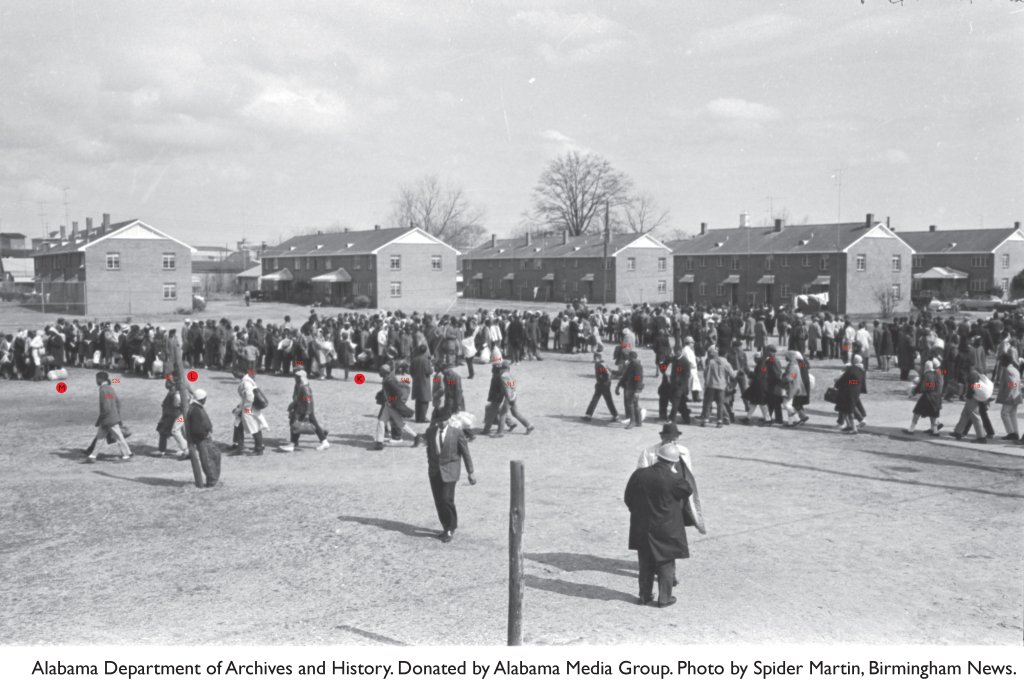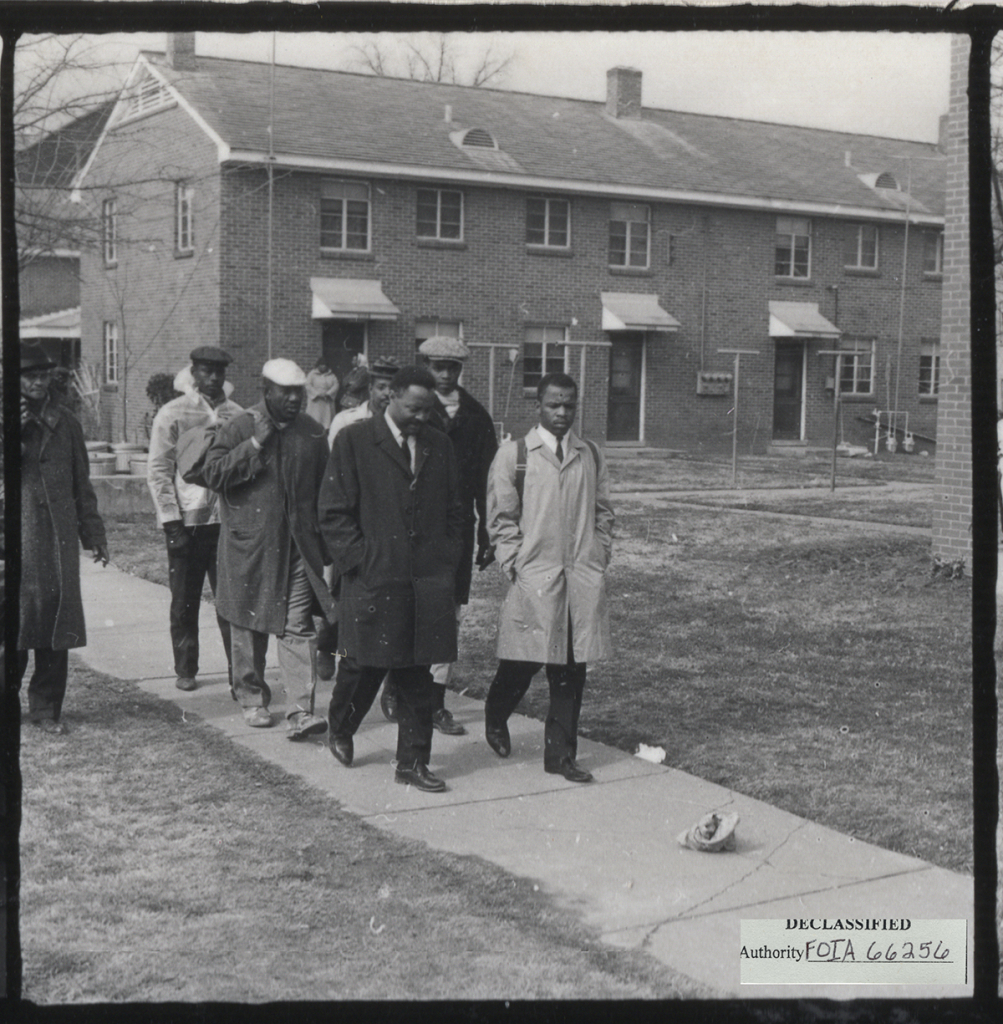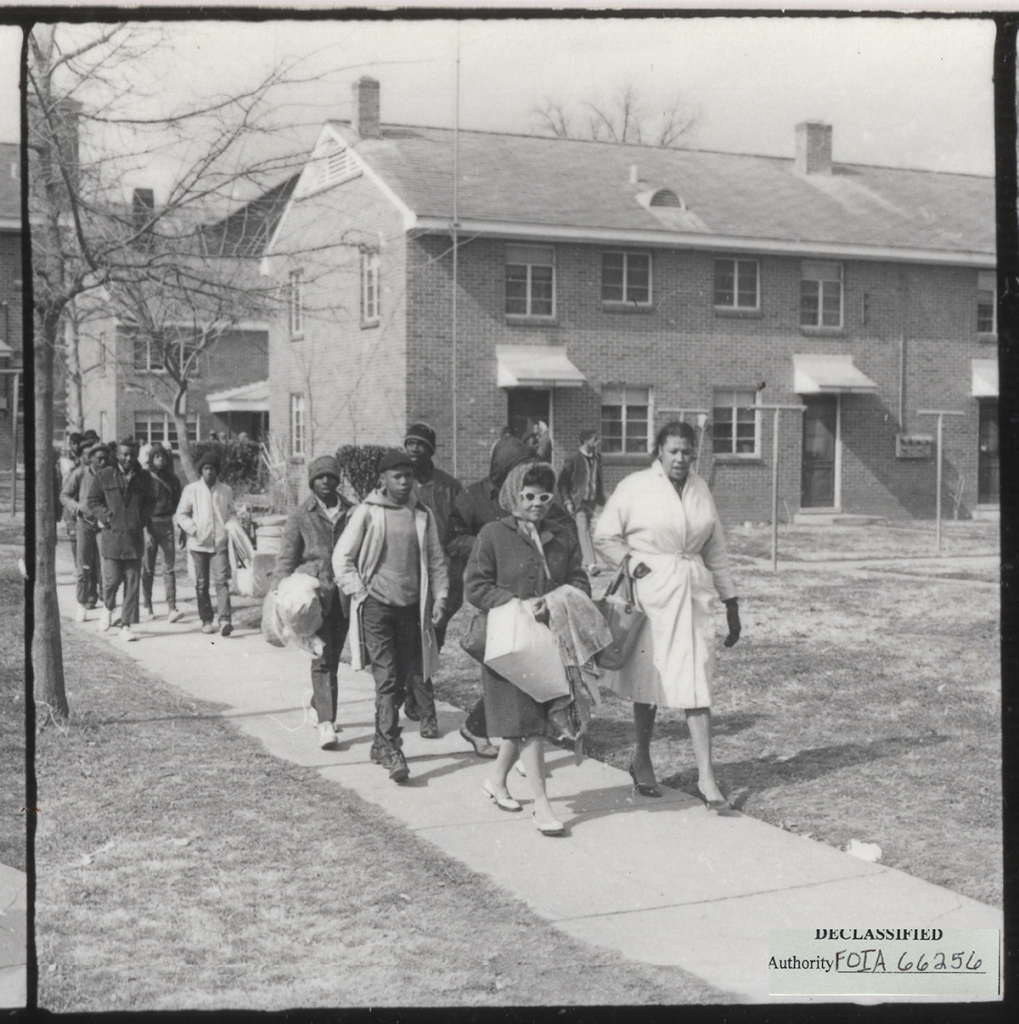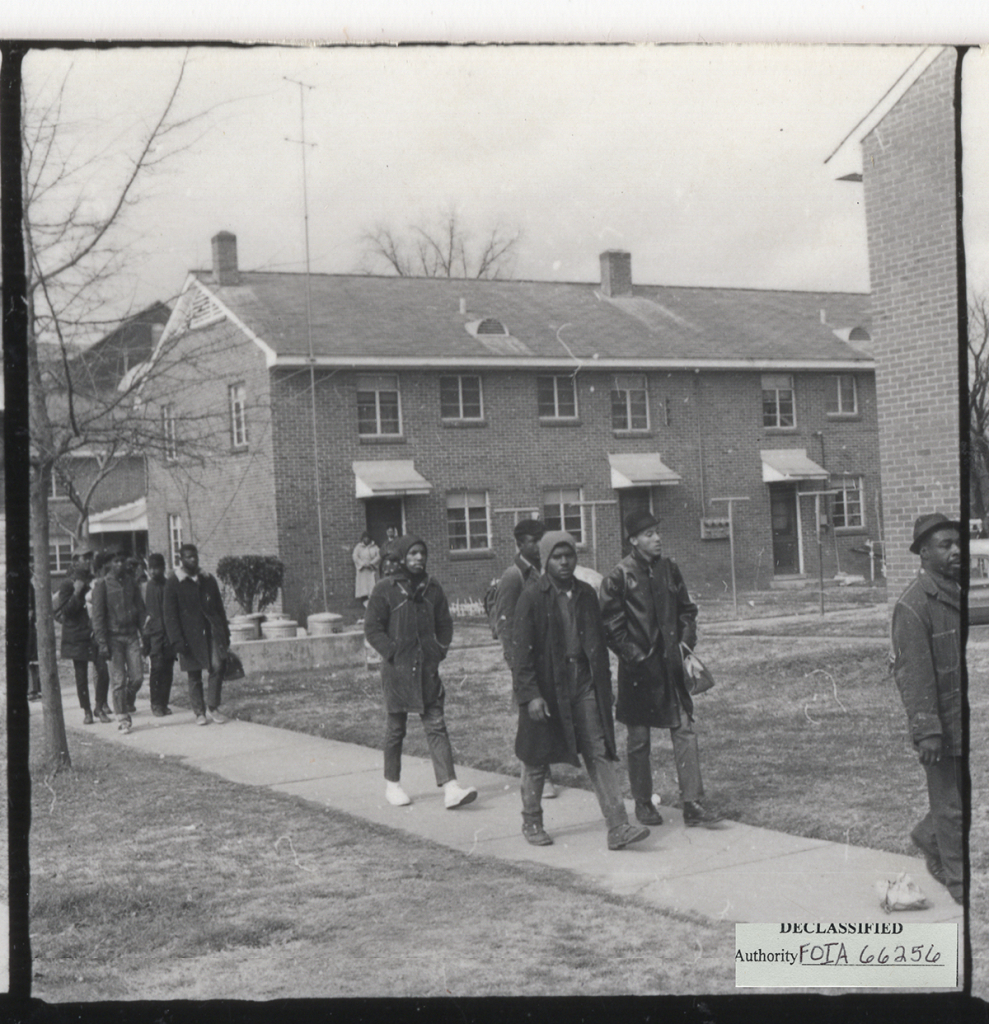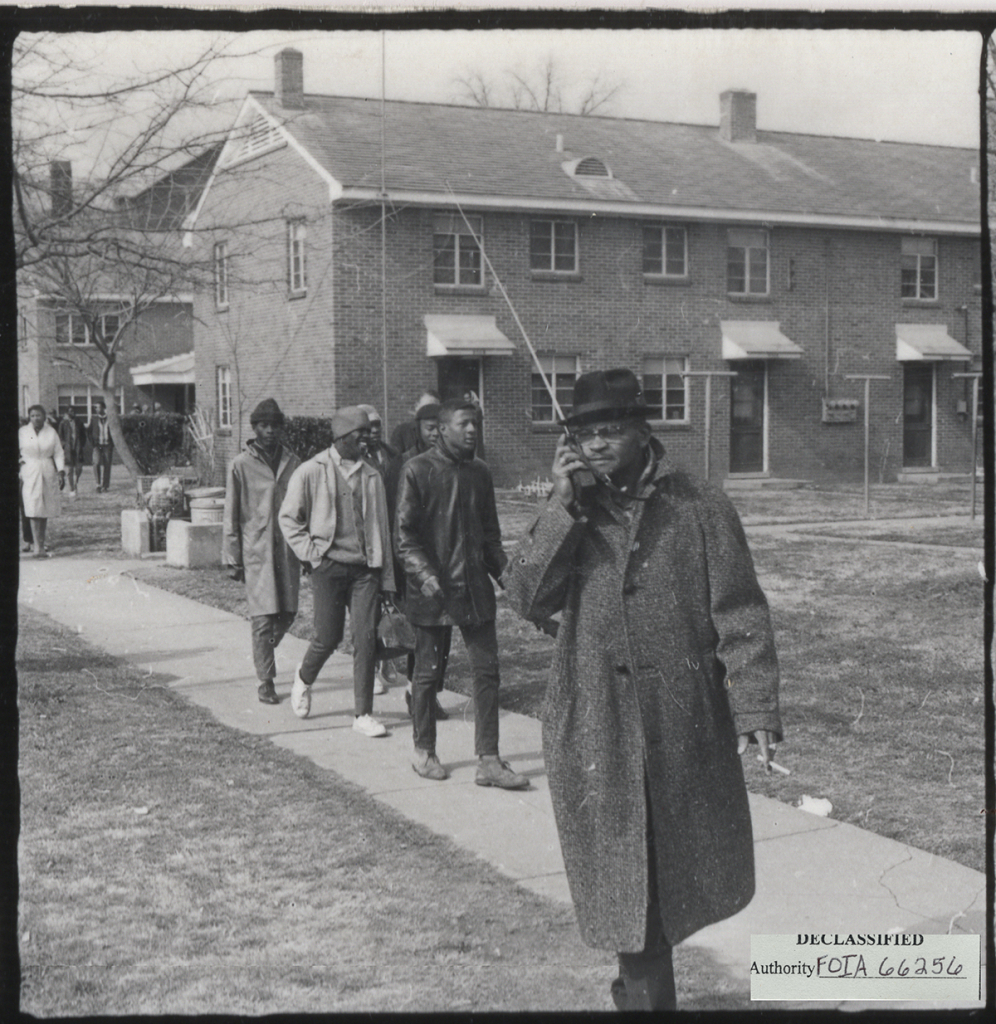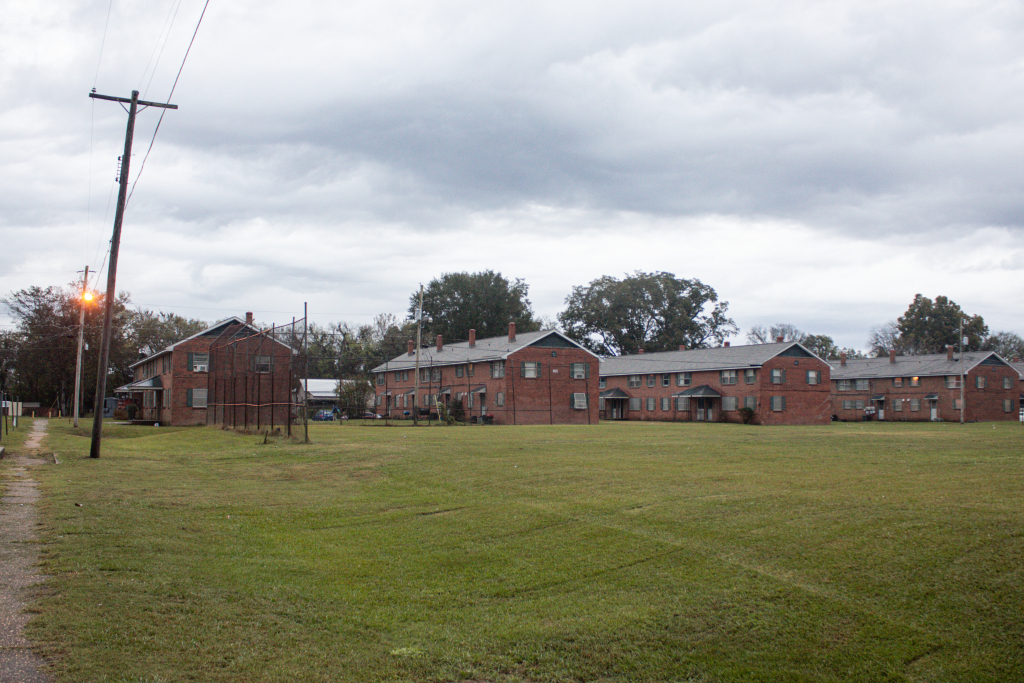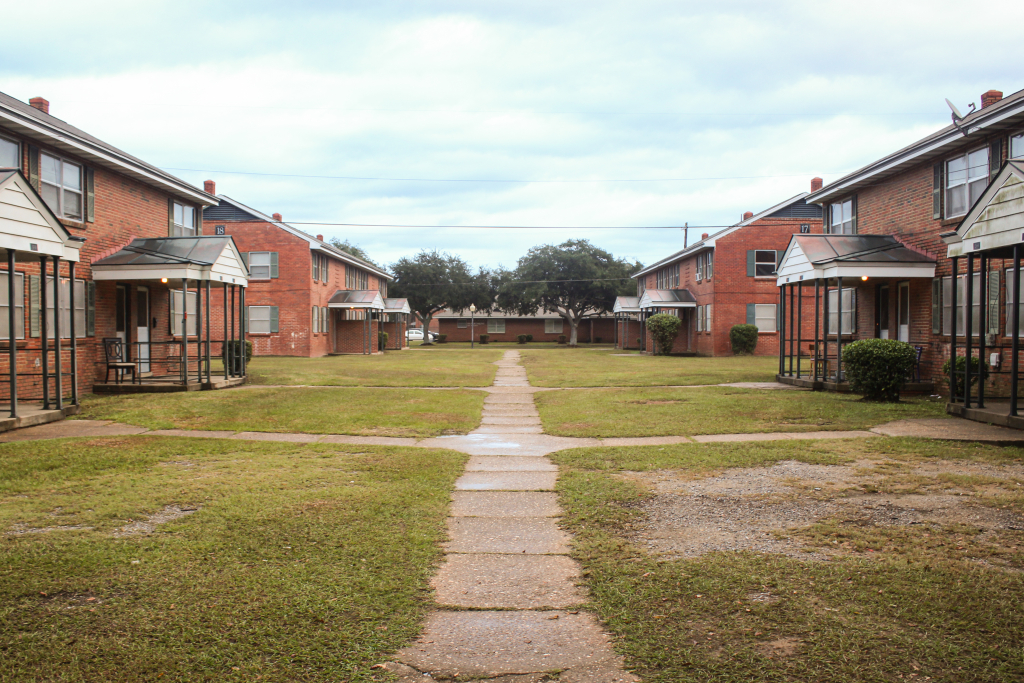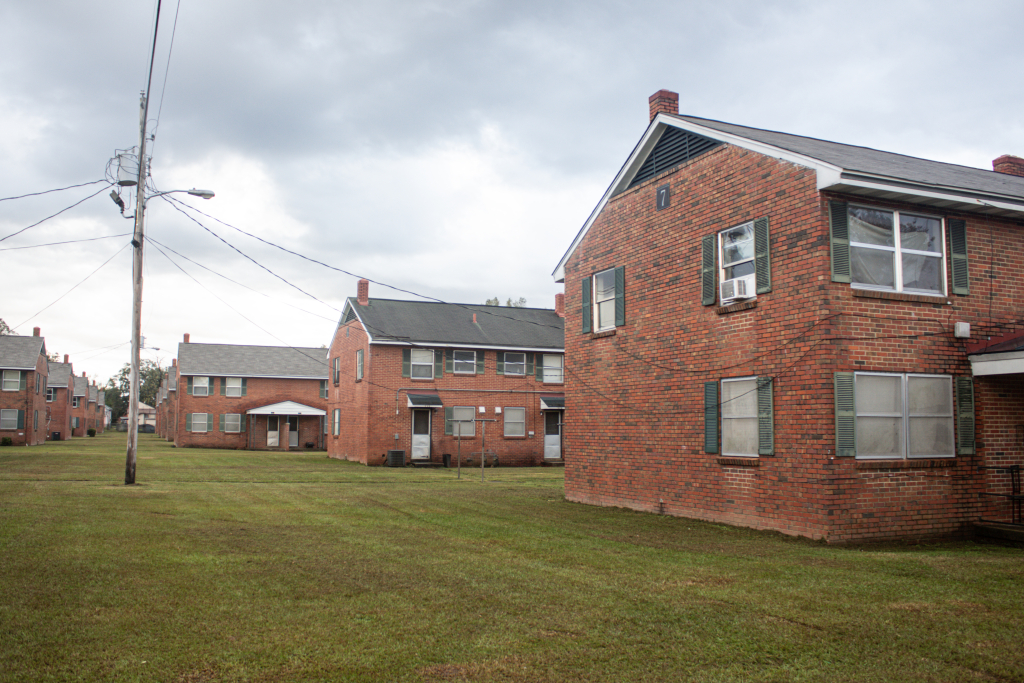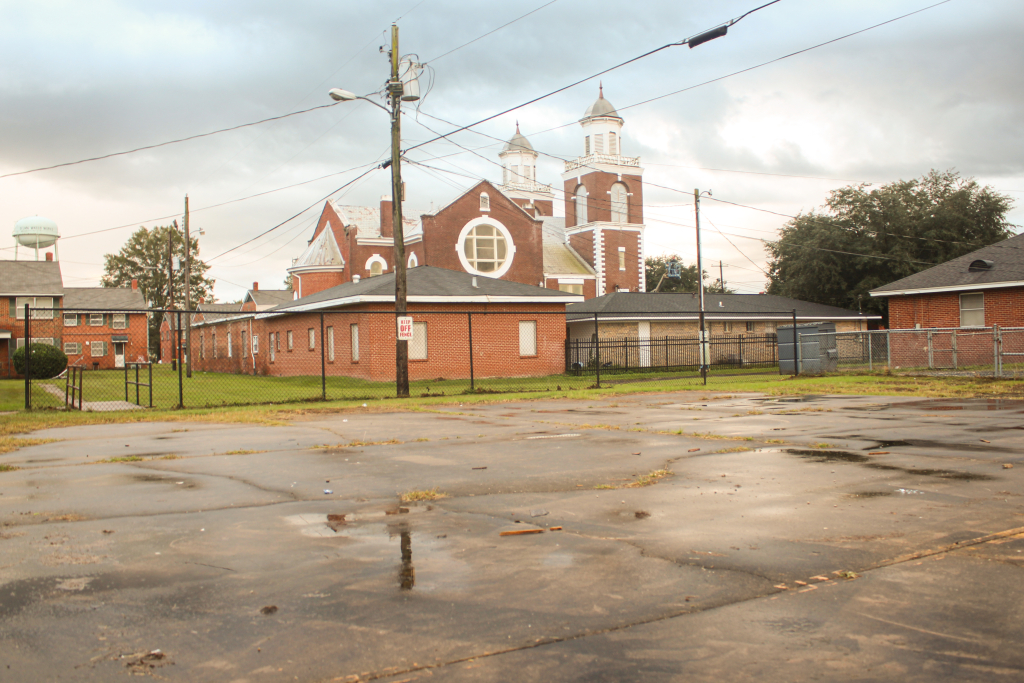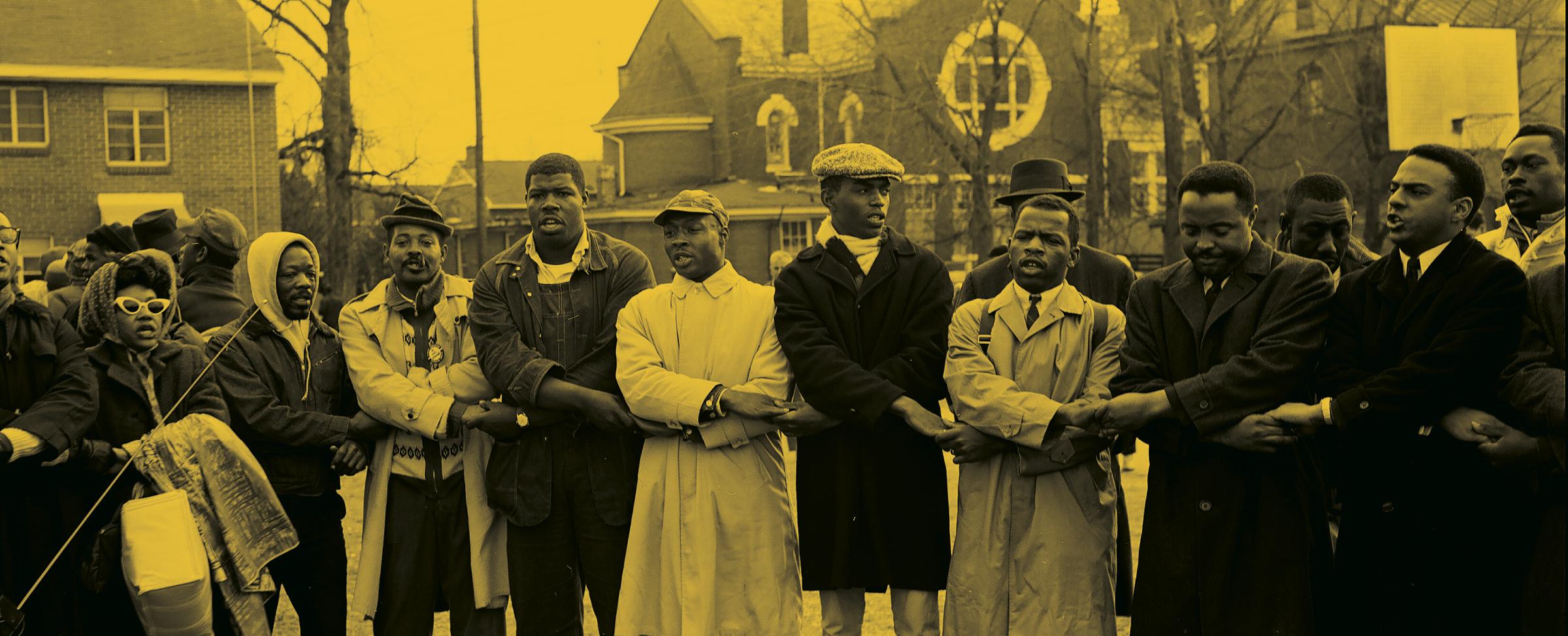
ASSEMBLE
By the early afternoon of March 7, 1965, hundreds of marchers, media members, and police had gathered at George Washington Carver Homes, First Baptist
Church, and Brown Chapel AME Church.

Organizers representing the Student Nonviolent Coordinating Committee (SNCC) and the Southern Christian Leadership Conference (SCLC) formed the protestors into evenly divided squads. That morning many demonstrators had arrived from nearby Marion eager to join the march and to protest the recent murder of Jimmie Lee Jackson at the hands of an Alabama State Trooper. As the marchers gathered, a cadre of local and national civil rights movement leaders led the assembly in prayer before leading the group through Selma.
George Washington Carver Homes
Built in 1952, this public housing development emerged as the center of Selma’s voting rights organization and protests. Brown Chapel AME (pictured above) and First Baptist Church are in this area. Dr. Martin Luther King Jr., SCLC came to Selma in early 1965 to aid in the ongoing voter registration drive.
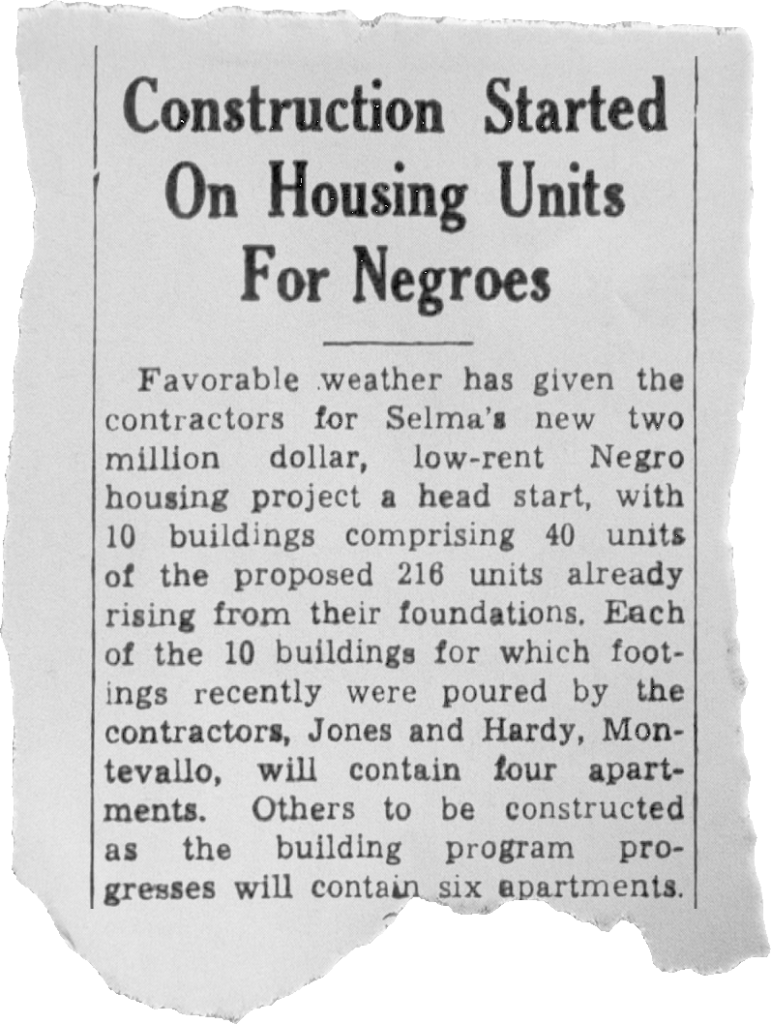

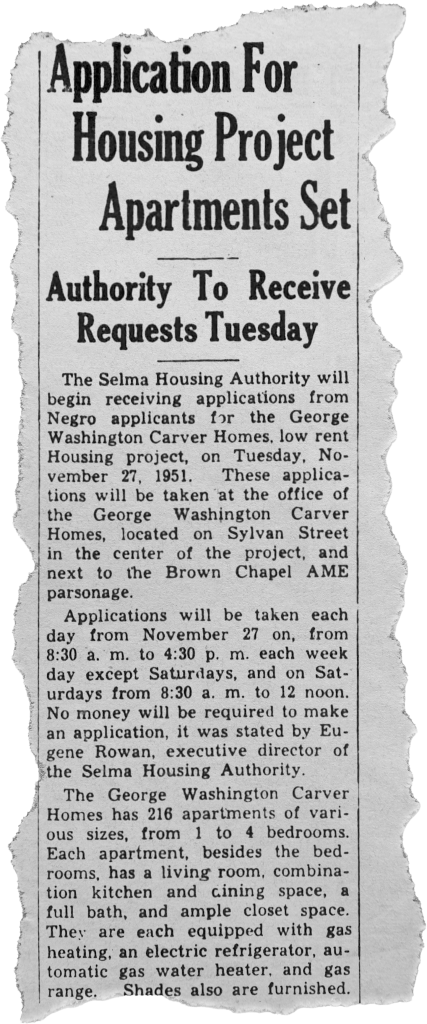
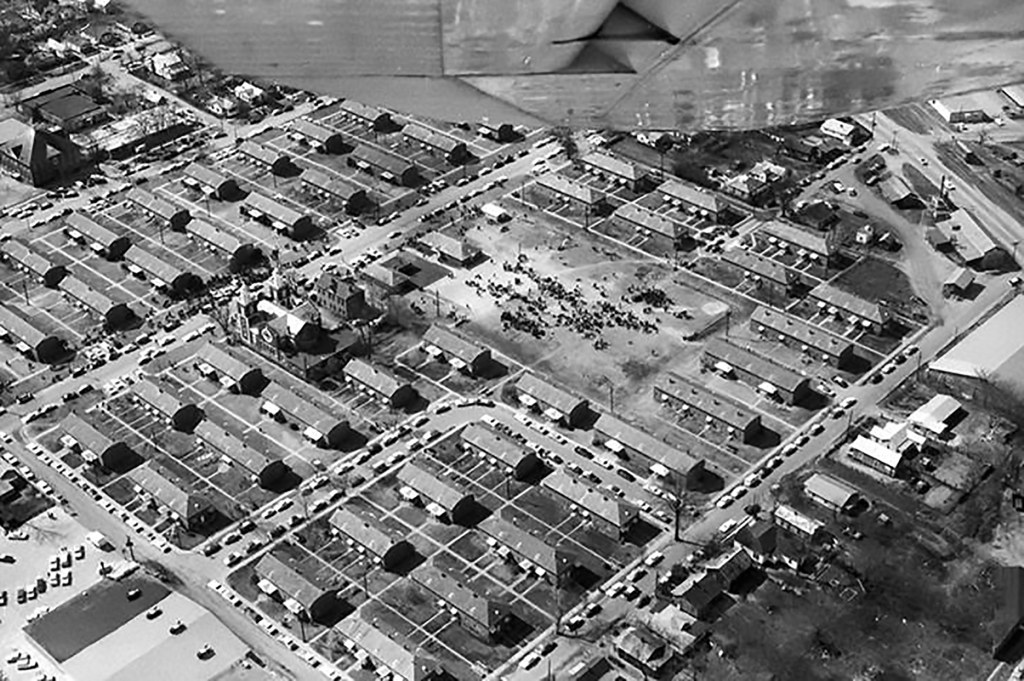
The two million dollar project was undertaken to provide more affordable living spaces and better housing conditions to the previous residents of the area and to new residents. According to a February 4th, 1951 edition of the Selma Times Journal, over 100 structures were originally demolished from the area to make room for the housing project.
BROWN CHAPEL AME CHURCH
Both the building and the members of Brown Chapel AME Church played pivotal roles in the Selma, Alabama, marches that helped lead to the passage of the 1965 Voting Rights Act. The starting point for the Selma-to-Montgomery marches, Brown Chapel also hosted the Southern Christian Leadership Conference (SCLC) for the first three months of 1965. Another nearby local church, First Baptist, acted as the headquarters for the organizers of the Selma Campaign–the Student Nonviolent Coordinating Committee (SNCC). Brown Chapel AME Church, with its imposing twin towers and Romanesque Revival styling, was built in 1908 by a black builder–of whom little is known — Mr. A.J. Farley. On Sunday morning (known as Bloody Sunday) March 7, 1965, despite a ban on protest marches by Governor George Wallace, about 600 black [and white] protestors gathered outside Brown Chapel to march from Selma to the state capital in Montgomery.
https://www.nps.gov/places/alabama-brown-chapel-ame-church-selma.htm
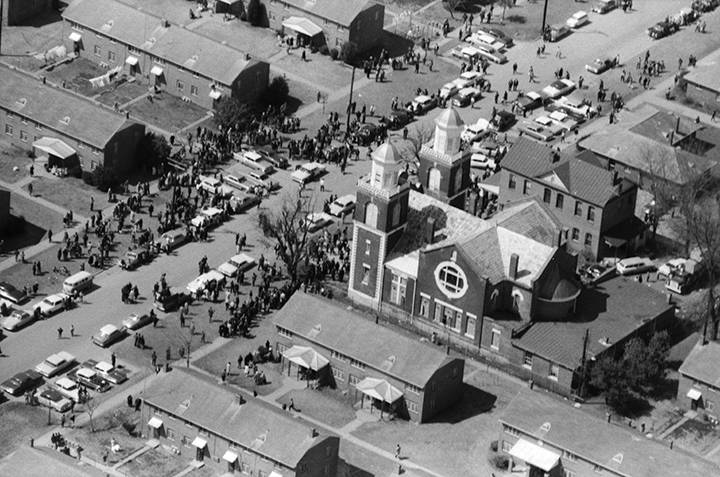
James “Spider” Martin, staff photographer at the Birmingham News, takes a photograph of Brown Chapel AME Church in the reflection of a reporter’s sunglasses. His caption, written in 1965, describes his time on assignment during the Selma marches.
Photography was critical in showing the atrocities of Bloody Sunday to the rest of the country. According to Dr. Martin Luther King, Jr “… we could have marched, we could have protested forever, but if it weren’t for guys like [Spider], it would have been for nothing. The whole world saw your pictures. That’s why the Voting Rights Act passed.”
from, ”Selma is Now” by Doug McCraw and Tracy Morgan. University of Texas Press. 2025 →

SNCC & SCLC
Founded in 1960 at Shaw University in Raleigh, North Carolina, the Student Nonviolent Coordinating Committee (SNCC) organized students across the country to demand Black civil equality. The group led numerous sit-ins to desegregate public and private spaces and oversaw many voter registration campaigns. In 1963, Bernard Lafayette, an SNCC organizer, came to Selma to initiate a voter registration drive. The Southern Christian Leadership Conference (SCLC) was founded in 1957 in Atlanta, Georgia. The SCLC organized Black churches and ministers in the fight against racial discrimination. Led by Rev. Dr. Martin Luther King Jr., SCLC came to Selma in early 1965 to aid in the ongoing voter registration drive.

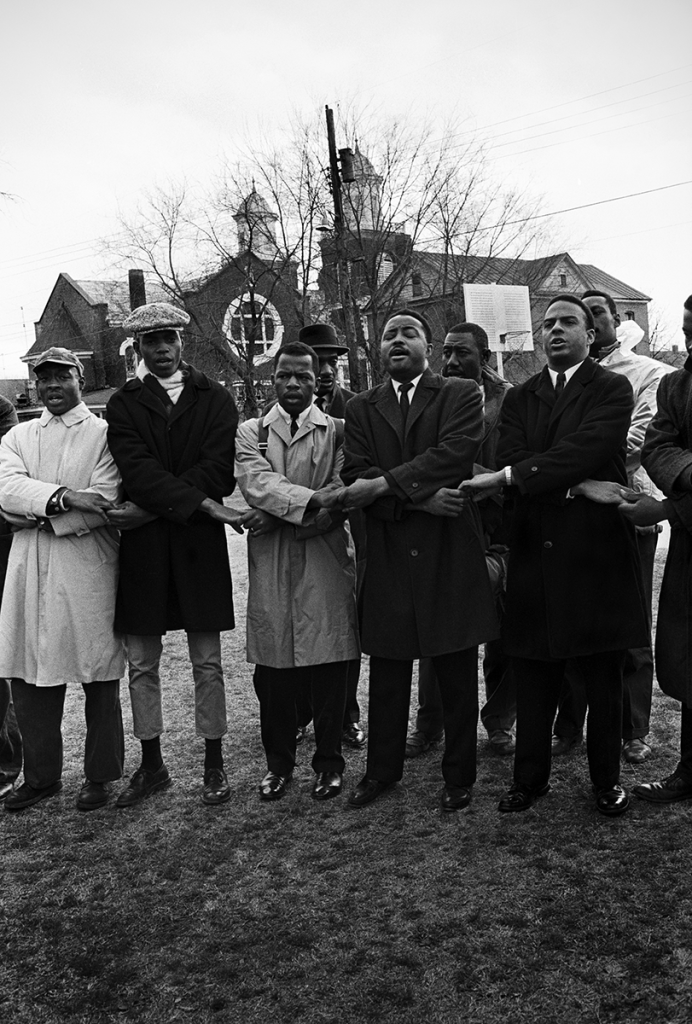
Arms linked, Bob Mants, John Lewis, Rev. Hosea Williams, and Andrew Young sing freedom songs with marchers outside Brown Chapel AME Church before beginning the march.
from, ”Selma is Now” by Doug McCraw and Tracy Morgan. University of Texas Press. 2025 →
